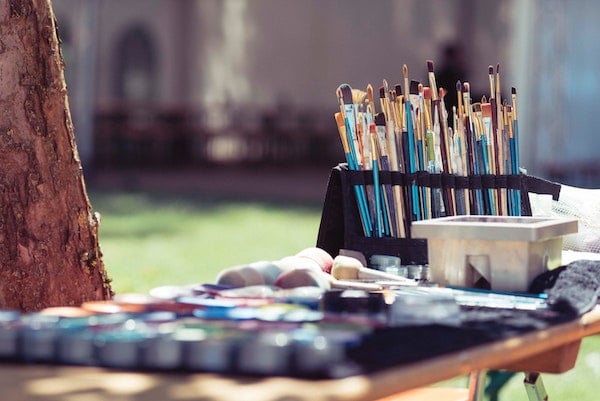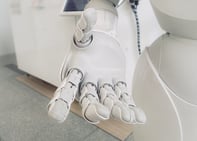Published on
To Stand a Chance at Survival, Higher Education Needs Creativity

In the face of the present disruption and unknown future ramifications wrought by a global pandemic, higher education faces a reckoning of revolutionary proportions.
In many ways, this revolution is long overdue. Our economy, society and planet have all radically changed since the predominant models that pervade higher education were established, yet many postsecondary institutions have been operating in largely the same way for decades, blithely unresponsive to a changing world.
The most glaring impact to colleges and universities in this time has been a shift to online delivery and the concomitant eradication of the traditional student experience, but this crisis is raising deeper structural questions about the purpose of higher education, what should be taught, how it should be delivered, who is included and excluded and what a degree or diploma is worth.
The best hope for rising to the short- and long-term challenges facing higher education is creativity. Seemingly trite, a deeper inspection of what creativity is, and consideration of how it can be manifested in higher education, inspires adaptation, which will counter the desire to return to business as usual in educational delivery, curriculum and organizational strategy.
To appreciate the need for creativity, consider first what creativity actually means. Contrary to popular myth that it only applies to artistic endeavours, scholars define it much more broadly. Creative ideas can come from any domain but must be both novel and useful for a given context. Whereas research exploring the evaluation of creative ideas reveals our bias toward novelty, higher education must take special care to ensure new directions are useful.
Under this definition, in order to act creatively, understanding context is critical. While this pandemic is front and centre, it is but gasoline on the fire of an already explosive global stage. As we enter the Anthropocene, or human epoch, in which our force upon the planet is the Earth’s defining feature , and the Fourth Industrial Revolution takes hold, punctuated by large scale automation and human ability augmented by artificial intelligence, we must contend with novel industrial, environmental and social challenges. Critically, all of these trends intersect with the current pandemic crisis; Andrew Winston argues in MIT Sloan Management Review that “the new challenges we face point to more permanent changes we must make in our lives and how we do business,” and that “there are overlaps and dependencies between all our biggest issues.”
These issues clearly supersede education, with some even raising the existential risk facing our species, but have clear implications for how higher education’s quest for novelty and usefulness should proceed. Not only must domain-specific knowledge be imparted, emphasis must be placed on curriculum that fosters the development of domain-general skills and abilities that can facilitate success in the context of this dynamic, challenging and technologically advanced global reality. Prominent reports from organizations like The World Economic Forum, The Institute for the Future, and RBC, converge in articulating the need for greater focus on skills like creativity and complex problem-solving to navigate the future of work and some of the world’s most pressing challenges.
Both the move to digital delivery and a shift toward creativity-based education necessitate novel approaches to how we teach. Many are lamenting that online education is a pale shadow of the real thing, but traditional stand-and-deliver lectures, often with hundreds of students packed in auditoriums, left much to be desired anyway. And while active, experiential pedagogical techniques may be easier to apply in person, creative approaches that leverage technology can elevate the psychologically essential aspects of engagement and even increase personalization. The same technologies that are disrupting our economy and society are producing important new mediums for active learning, even in domains that require hands-on participation. For instance, at Sheridan College, Dr. Andy Alubaidy has created a custom-built virtual lab for electromechanical engineering students to partake in “hands-on” activities. Massive funding investments are being made in EdTech, and higher education must creatively align with these movements to keep abreast of innovation in this sector.
Critically, this transition to digital is not happening in a vacuum; industry, too, is seeing a shift toward remote work and collaboration. Even if online education has shortcomings, and collaborating via the limitations of screens lacks the richness of human connection, graduates will face these same challenges as they enter the workforce. More and more of our thinking interacts with technology, so education that mirrors that reality is practical. Engaging directly with the reality facing our species today is even more vital, and applied research partnerships that give students the opportunity to engage directly with organizations, be they private, public or non-profit, should be highly prized. Our team at Sheridan College recently secured a grant that will allow students to directly participate in tackling challenges in our community. Institutions that prioritize such novel applied learning opportunities will be seen as more useful in preparing students for what comes next.
Even if such creative shifts manifest across colleges and universities, many will still rightly question whether tuition costs are worthwhile in a world awash with information and opportunities for learning. It is also apparent that certain classes of institutions are more under threat than others. Scott Galloway predicts “a handful of elite cyborg universities will soon monopolize higher education”, with partnerships between big tech and big-brand schools pushing smaller universities and colleges to the brink. Differentiated curriculum, applied learning opportunities, and creative delivery, or drastically re-imagined financial models and new conceptions of scale, are needed for survival. An increased investment in micro-credentialing, certificate programs and other offerings outside of traditional four-year degrees will be needed to compensate for losses in traditional tuition–particularly from international students–and address diversified demands. Institutions must strive for unique offerings that set them apart from competitors and are useful enough to warrant the significant investment from both students and the broader citizenry who support higher education through taxation.
While a survey of institutions today would reveal great uniformity in composition and strategic orientation, the future will force more creative and diverse approaches to higher education, with different schools carving out unique market shares. Leaders will need to exhibit paradoxical leadership, embracing the tension between what higher education has been, what it must be, and how their institution fits into the broader system. Strategic plans and offerings that are comprised of the usual set of synonyms bandied about by senior administration will be insufficient (the word creativity included), and imagination in conveying novelty and usefulness is needed — these visions must be realized concretely.
Will the institutions of today be successful in creating new models while preserving the foundation of scholarship and learning that serve as the pillars of our higher educational system? Can colleges and universities position themselves as sufficiently unique and useful to survive?
Only time will tell, but creativity seems to be our best hope.
Author Perspective: Educator



